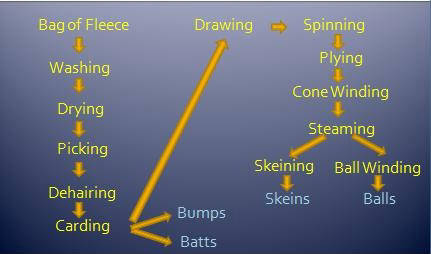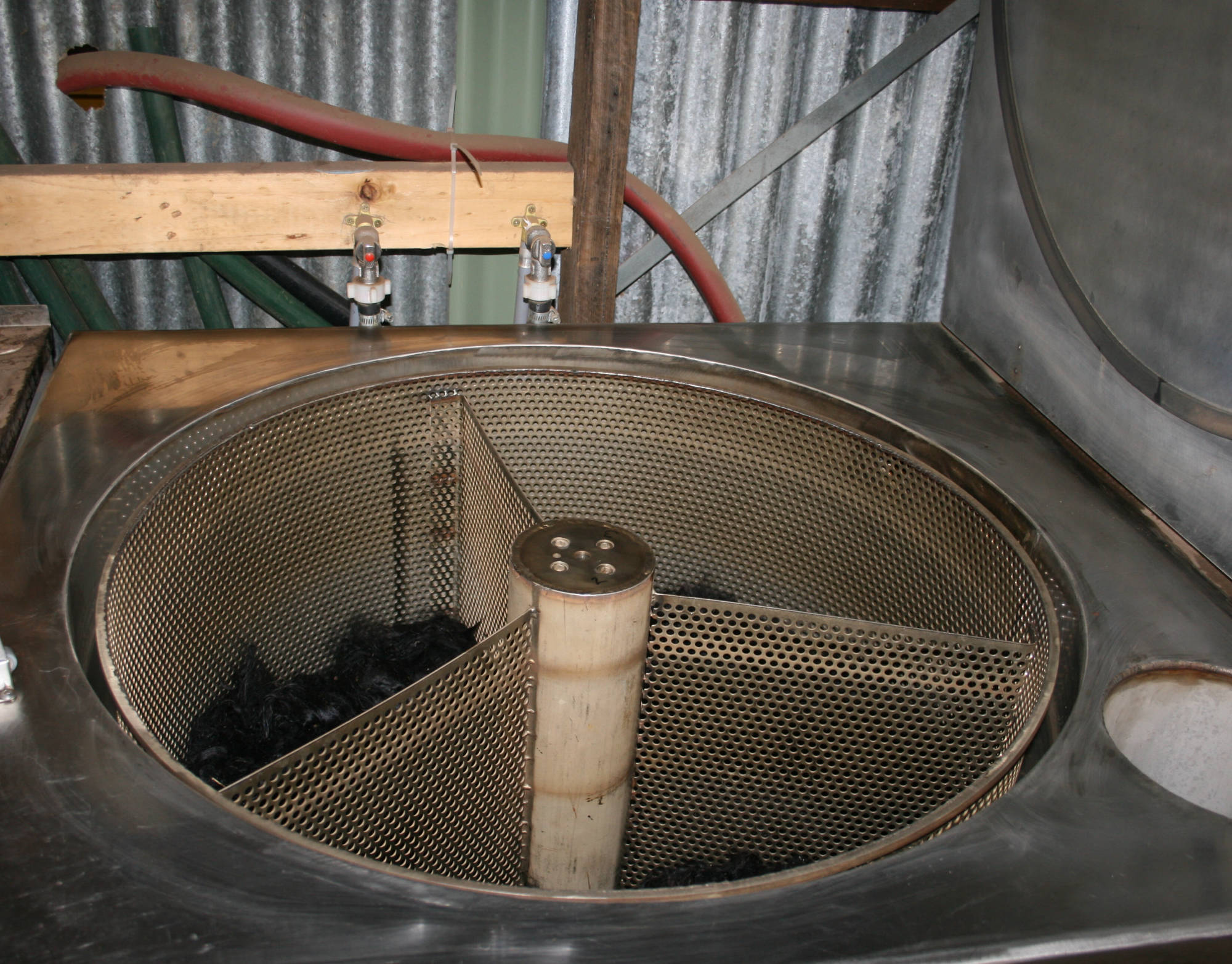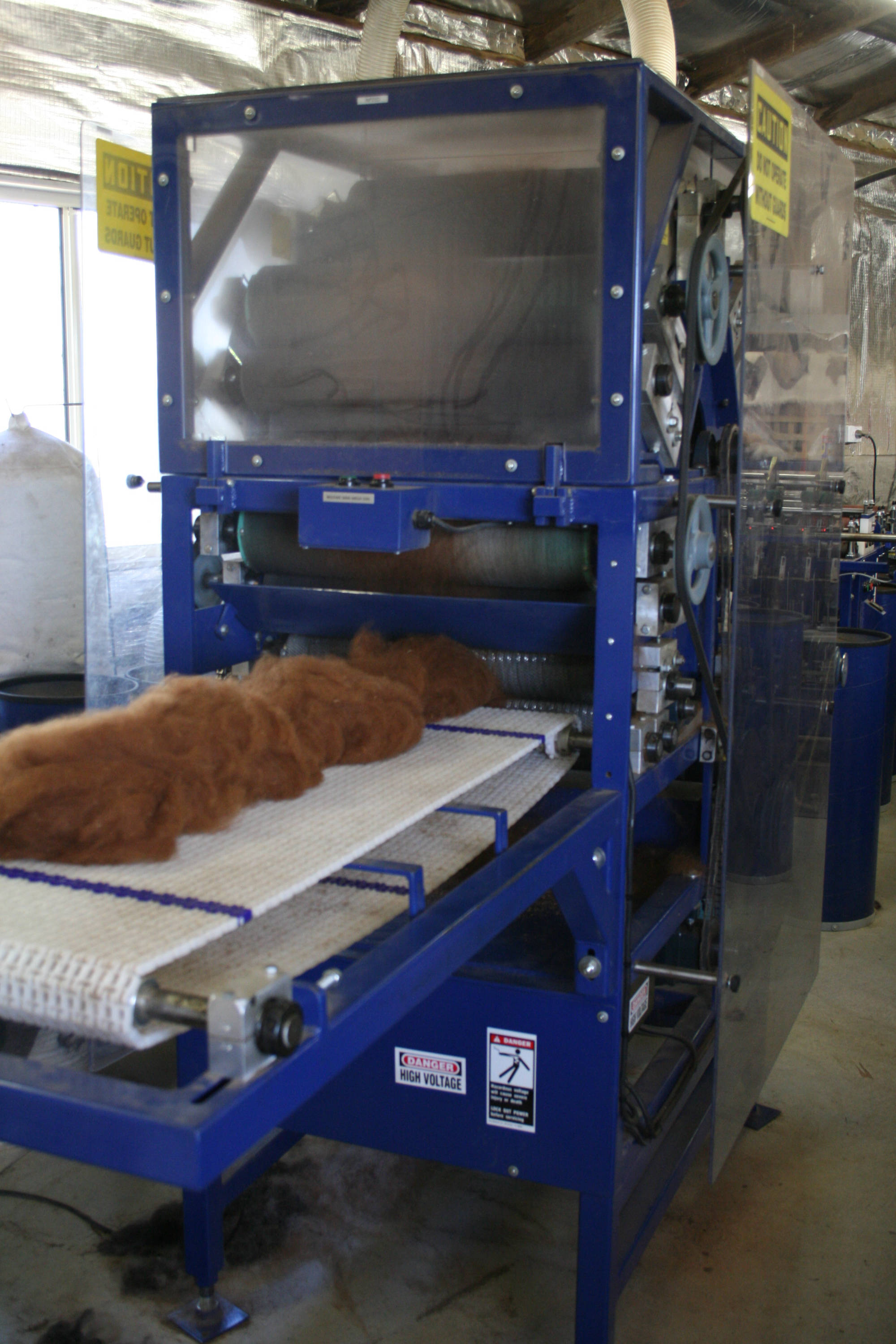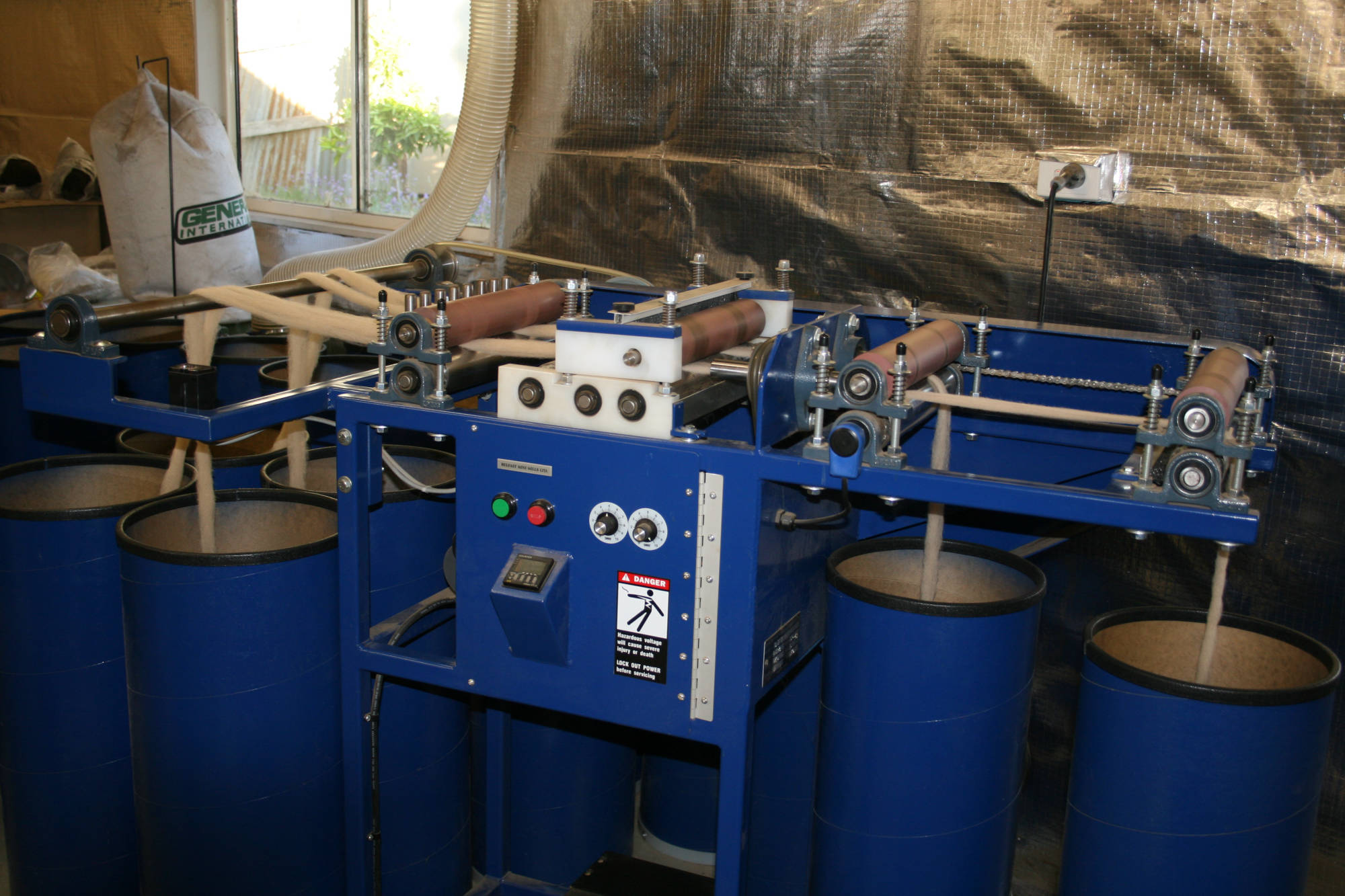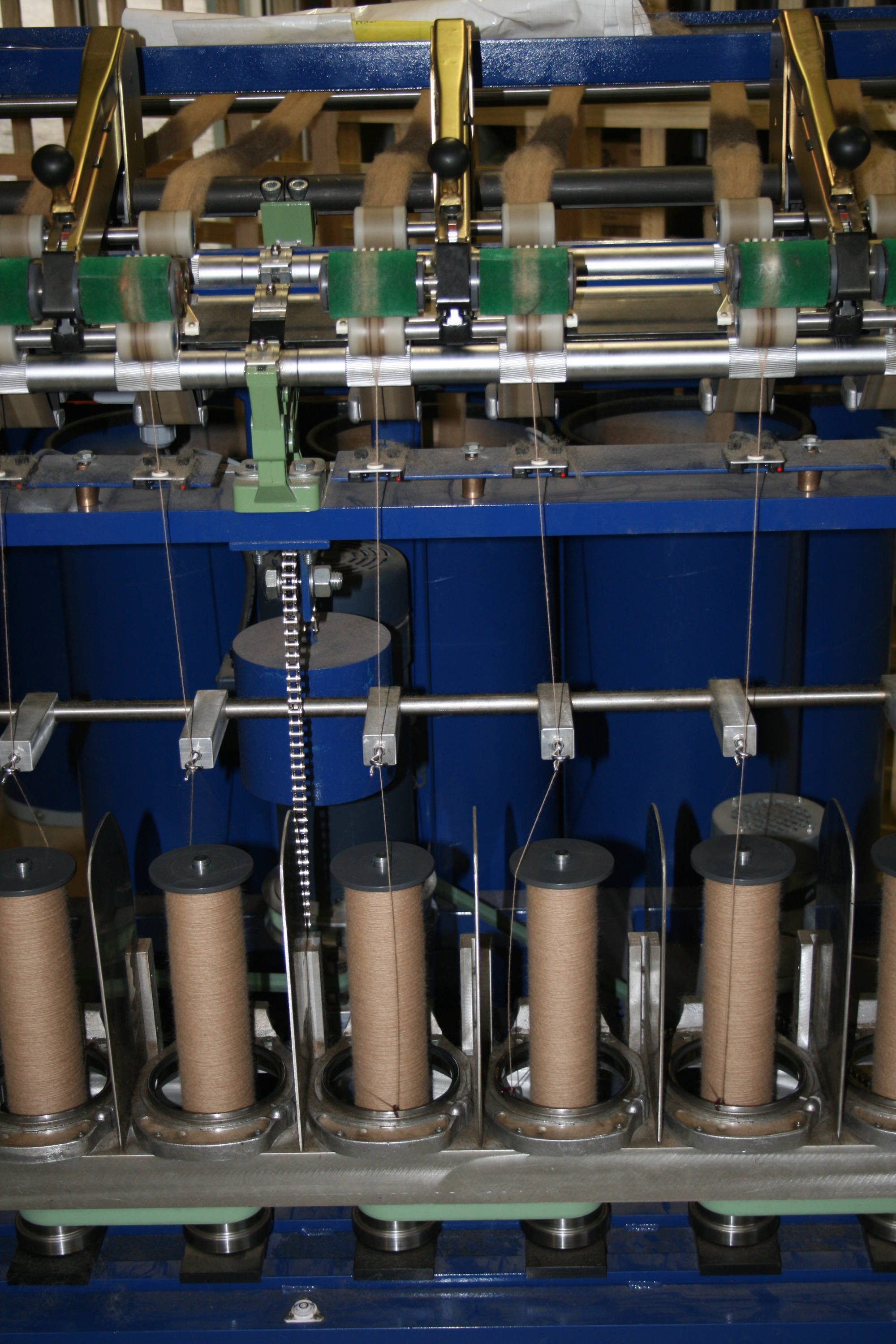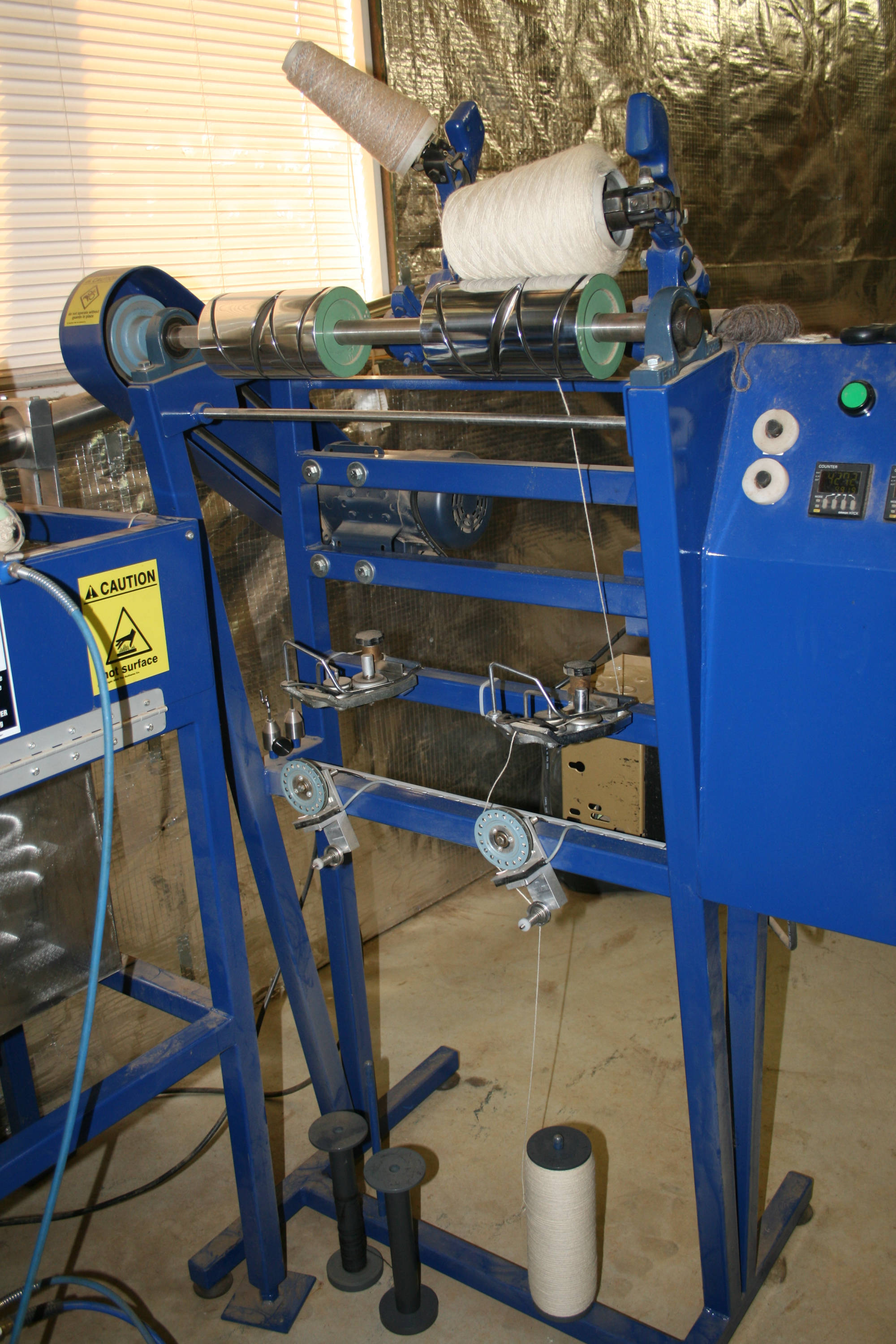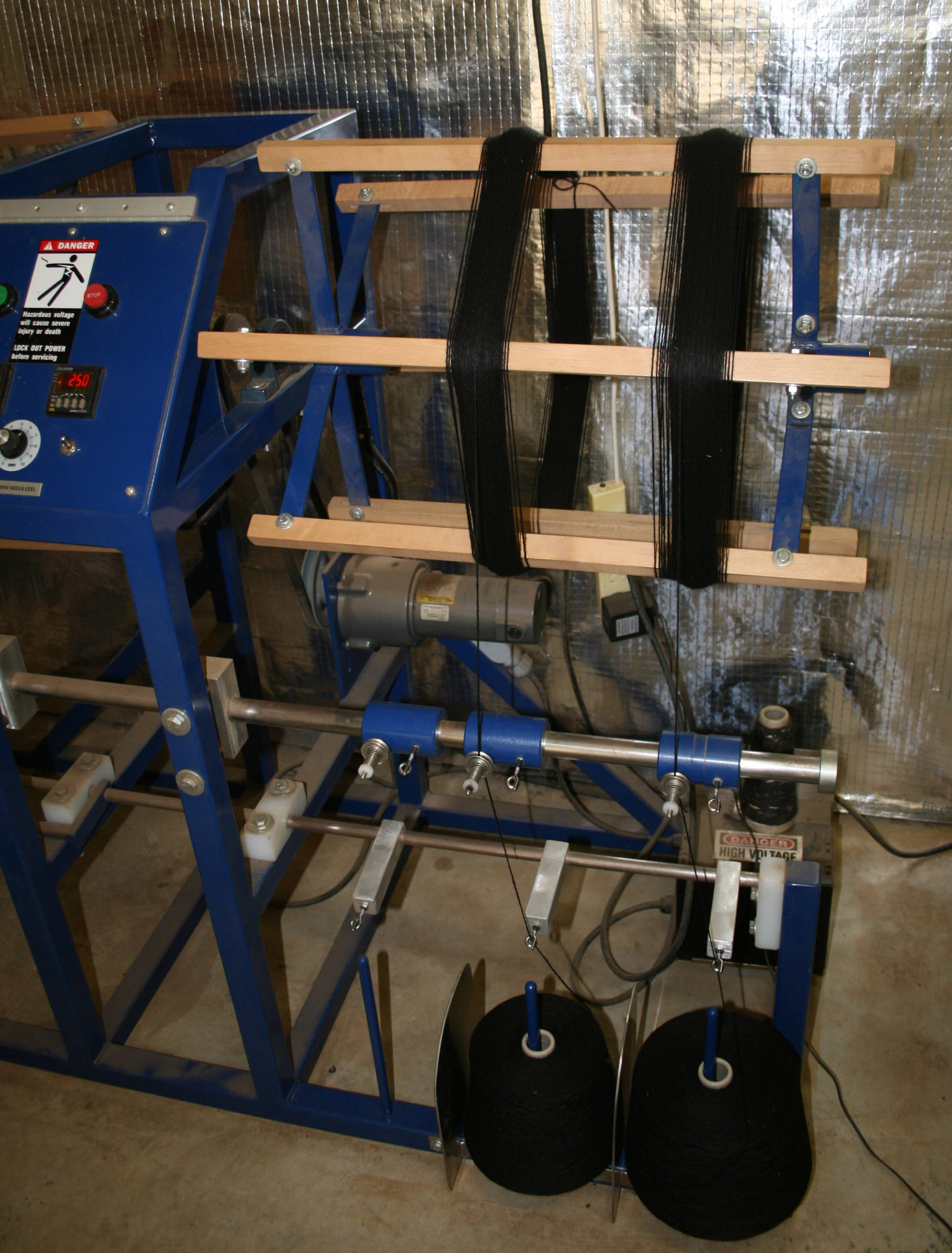Spinner
Transforms the rovings into a high quality spun yarn. Here the thickness and twist of the yarn (strands) can be fully adjusted to suit individual requirements. Here I need to find the balance between softness and durability of the yarn. Less twist and the yarn feels beautiful and soft, but doesn’t wear well. Too much twist, very durable but feels harsh. If the micron or SD is high, the yarn can also feel harsh, no matter how little twist I use. I also need to have a higher twist on short yarns just to hold them together. Our climate is also a major factor in processing fleece, with both the fleece and machinery impacted by weather conditions – too hot, too humid, too cold, and too dry or even too windy - there are no auto settings and each run needs to be adjusted to suit the fleece and conditions. The fact that no two fleeces are the same can make the process of spinning up fleeces quite a challenging proposition. Spinning the yarn is also one of the more time consuming processes, with the finer the yarn required, the longer it takes to spin which also flows on to increase the time with all the remaining processes.
